You ar![Blue-paint-color-ideas-for-living-room-with-dark-furniture-and-dark-hardwood-floors[1]](https://keymoving.com/wp-content/uploads/2015/01/Blue-paint-color-ideas-for-living-room-with-dark-furniture-and-dark-hardwood-floors1-300x225.jpg) e ready for a fresh start and your new home deserves a makeover. You want to find just the right paint color but choosing just the right shade can be a bit of a challenge. While there are so many choices out there, you might feel overwhelmed with the number of options and ultimately become confused or frustrated.
e ready for a fresh start and your new home deserves a makeover. You want to find just the right paint color but choosing just the right shade can be a bit of a challenge. While there are so many choices out there, you might feel overwhelmed with the number of options and ultimately become confused or frustrated.
Since the paint color will set the tone for the room, KEY Moving has compiled a few tips to help you make this important decision a little easier.
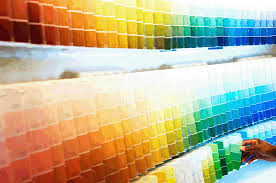 Take Your Time It is a good idea to collect paint chips when planning a room but wait to make your final decisions until you have developed the overall room theme and design. Pain is available in any shade and is the most flexible element of your room décor, the easiest component to change and also the most cost efficient. Collect samples but do not make your final decision until you have finalized your plans for rugs, wallpaper, furniture and fabrics.
Take Your Time It is a good idea to collect paint chips when planning a room but wait to make your final decisions until you have developed the overall room theme and design. Pain is available in any shade and is the most flexible element of your room décor, the easiest component to change and also the most cost efficient. Collect samples but do not make your final decision until you have finalized your plans for rugs, wallpaper, furniture and fabrics.
Organize Your Decorating Samples  When you go shopping, you’ll need to refer to your fabric, carpet, tile, wallpaper, and trim samples constantly. Be sure to take everything with you wherever you go. You might see the perfect shade when you least expect it.
When you go shopping, you’ll need to refer to your fabric, carpet, tile, wallpaper, and trim samples constantly. Be sure to take everything with you wherever you go. You might see the perfect shade when you least expect it.
Learn the Colors You’ll find clues about the underlying tones of different shades of a color on a full sample strip of![paint_color_ideas_for_small_living_room_light_blue_paint_colors_for_best_living_room_design[1]](https://keymoving.com/wp-content/uploads/2015/01/paint_color_ideas_for_small_living_room_light_blue_paint_colors_for_best_living_room_design1-300x234.jpg) coordinated colors. Even if you’re not even considering using a darker tone, look at all the colors carefully. Decide if the family of colors is the direction you’re headed with your color selection.
coordinated colors. Even if you’re not even considering using a darker tone, look at all the colors carefully. Decide if the family of colors is the direction you’re headed with your color selection.
Formula for Colors If you’re working with a print fabric, you’ll probably be happier if you select the coordinating wall paint color from the background of the print. Use the deeper or brighter tones for accents throughout the room or neighboring spaces.
Trim it Out More often than not, you’ll select a shade of white or off-white for the moldings, doors, and windows. If you’re feeling brave, consider the palest shade of color to coordinate with the walls. For a really striking look, try lighter walls and dark tones or bright color for trim.
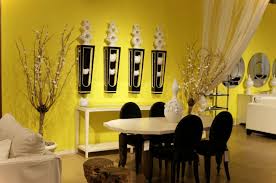 Choose the Paint Finish for the Job Consider which paint finish might be best for your project. Matte or flat finishes hide wall imperfections, but glossier finishes will reflect more light.
Choose the Paint Finish for the Job Consider which paint finish might be best for your project. Matte or flat finishes hide wall imperfections, but glossier finishes will reflect more light.
Warm or Cool?  Colors are often referred to as “warm” and “cool.” Orange, red, and pink are considered “warm” colors, while blues, greens, and violet are thought to be “cool.” Knowing the theory behind color can help you select the right tone for the feel you’re trying to achieve.
Colors are often referred to as “warm” and “cool.” Orange, red, and pink are considered “warm” colors, while blues, greens, and violet are thought to be “cool.” Knowing the theory behind color can help you select the right tone for the feel you’re trying to achieve.
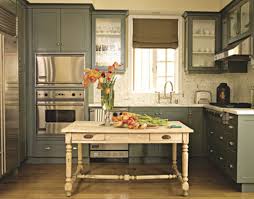 Not Your Average White Trying to find the perfect white can be troublesome. Beiges and off-whites have subtle color, so compare paint chips to your fabrics and flooring to determine if a warmer pinkish or yellow-toned white — or a cooler, bluer white — is best for your room.
Not Your Average White Trying to find the perfect white can be troublesome. Beiges and off-whites have subtle color, so compare paint chips to your fabrics and flooring to determine if a warmer pinkish or yellow-toned white — or a cooler, bluer white — is best for your room.
Take Notes It’s a good idea to make a note on the back of the paint color cards, telling yourself the name of the store where you picked it up, and the paint brand whenever this information isn’t printed there already. Since most home centers and hardware stores carry more than one brand of paint, you may discover the perfect color, and then find you can’t remember where you got the sample!
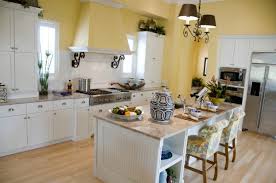 Light it Up The best way to get a true view of a paint color is to look at it in many lights. Take the paint chip outside to see it in natural light. Look at in under an incandescent and fluorescent light. Best yet, take the paint chip, fabrics, and accessories to the room in which they’ll live. Check out the colors there.
Light it Up The best way to get a true view of a paint color is to look at it in many lights. Take the paint chip outside to see it in natural light. Look at in under an incandescent and fluorescent light. Best yet, take the paint chip, fabrics, and accessories to the room in which they’ll live. Check out the colors there.
Measuring Your Space Take your room measurements with you to the paint store or home center. The professional at the store will help you determine the correct quantity of paint to buy for your job.
 Ask for Advice For paint advice, go both online and to your local paint store. Tell the paint professional about your project and goals for your decorating project. Ask which paint products they recommend, and why. Get information on specialty paints such as low-odor, stain-killing primers, chalkboard paint, washable paint, and many more.
Ask for Advice For paint advice, go both online and to your local paint store. Tell the paint professional about your project and goals for your decorating project. Ask which paint products they recommend, and why. Get information on specialty paints such as low-odor, stain-killing primers, chalkboard paint, washable paint, and many more.
Make a Match If you want to achieve a perfect match or find a truly unique color, your paint store or home center offers custom color mixing. This makes it possible to bring in a fabric swatch, painting, or other color reference, and have a special paint color created to be a perfect match.
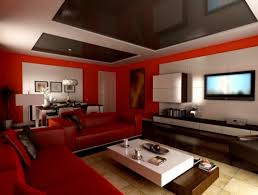 Look Up Light colors are usually most pleasing for a ceiling, because ceilings are seen in shadow. If you’d like the ceiling to match the wall color, buy ceiling paint one or two shades lighter than the wall color (on its color chip). Or, dilute your wall color with white paint in a ratio of 25% color to 75% white.
Look Up Light colors are usually most pleasing for a ceiling, because ceilings are seen in shadow. If you’d like the ceiling to match the wall color, buy ceiling paint one or two shades lighter than the wall color (on its color chip). Or, dilute your wall color with white paint in a ratio of 25% color to 75% white.
